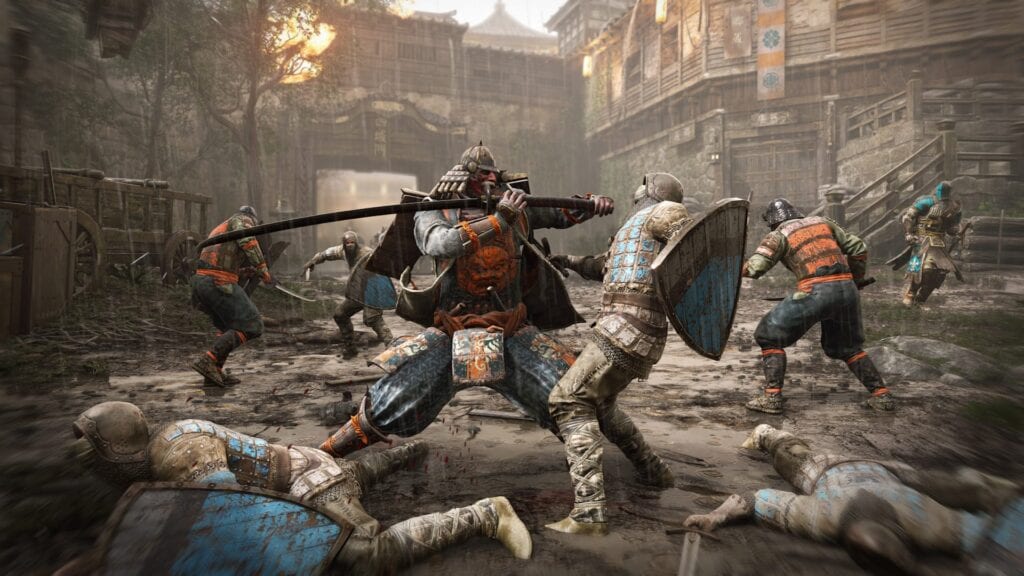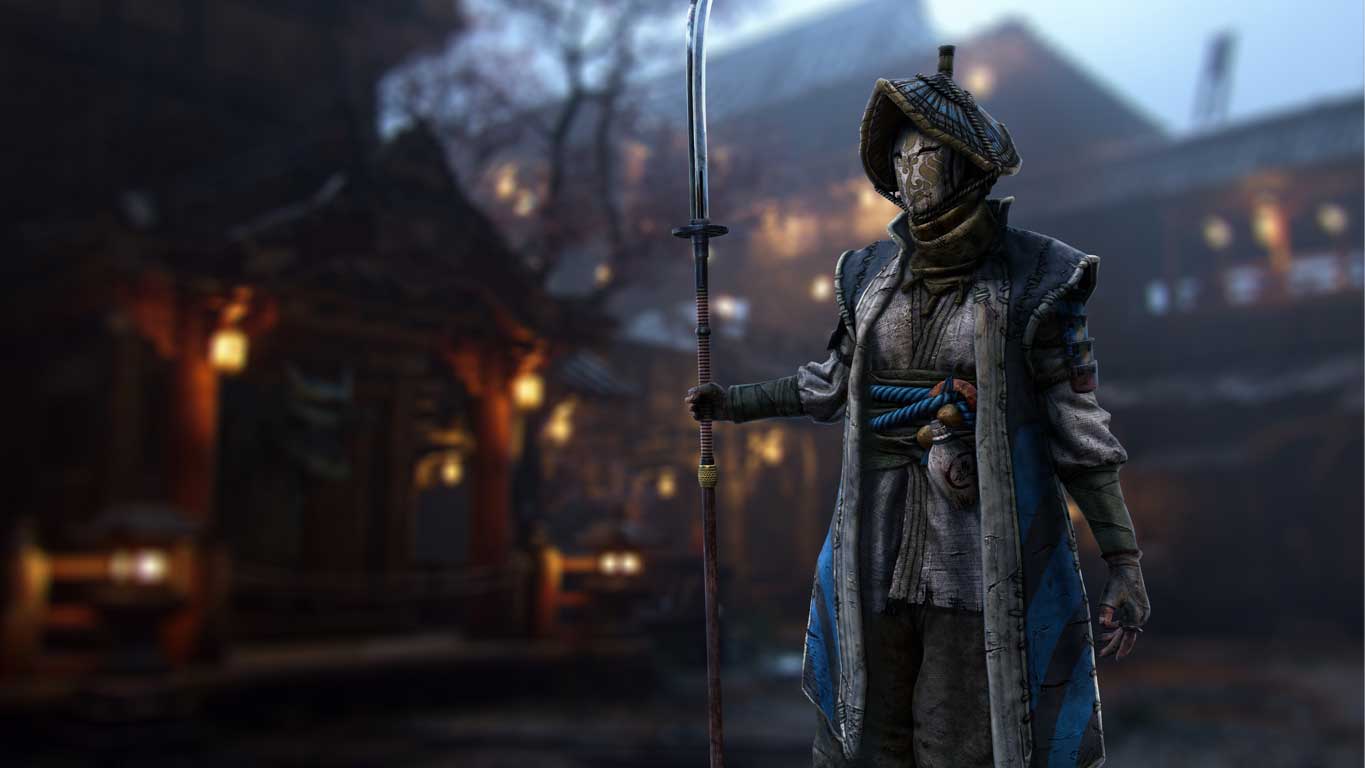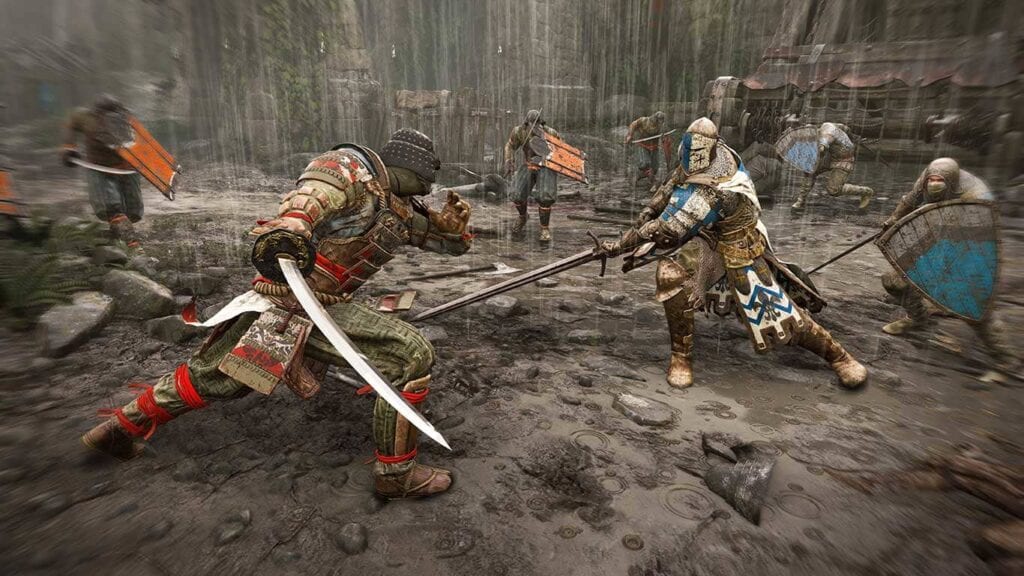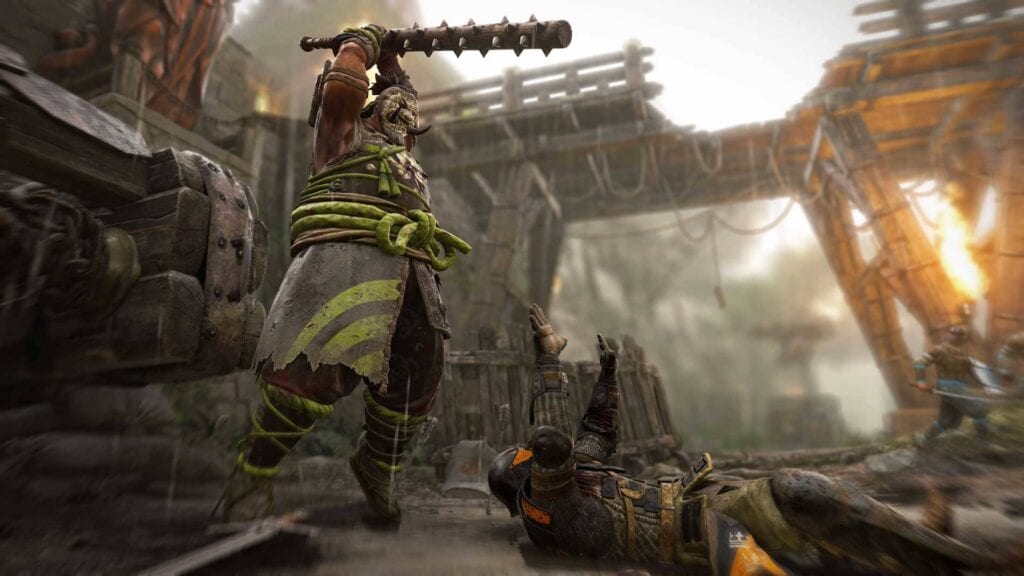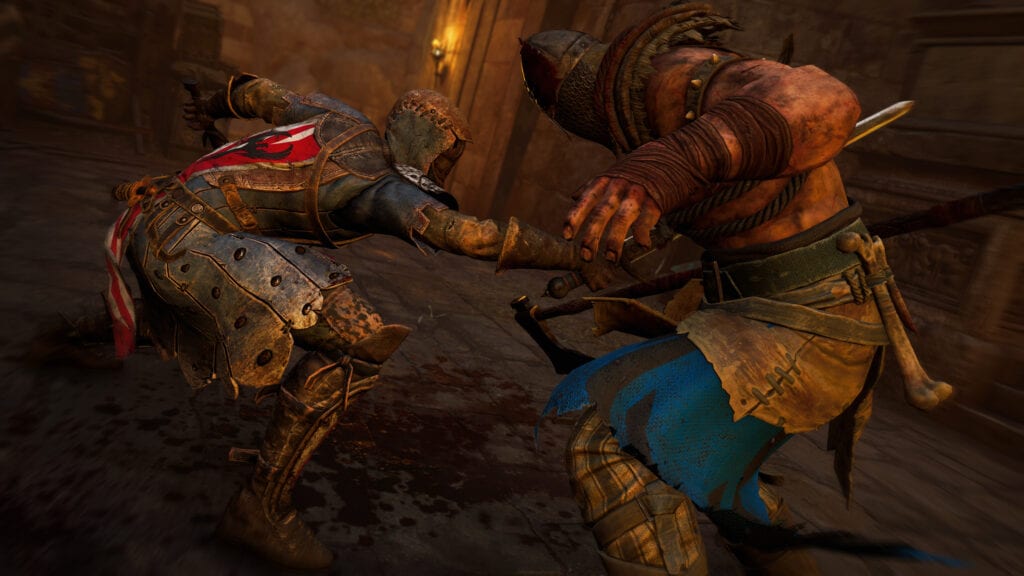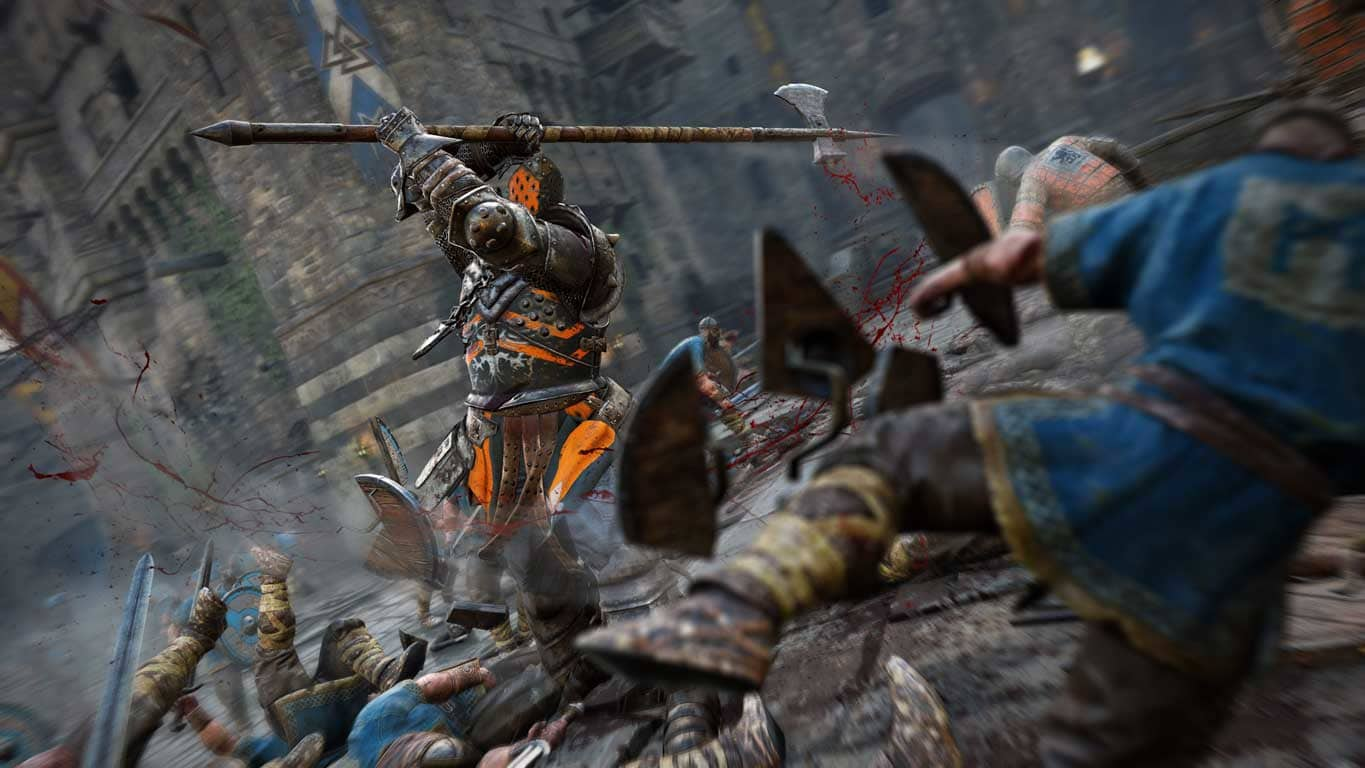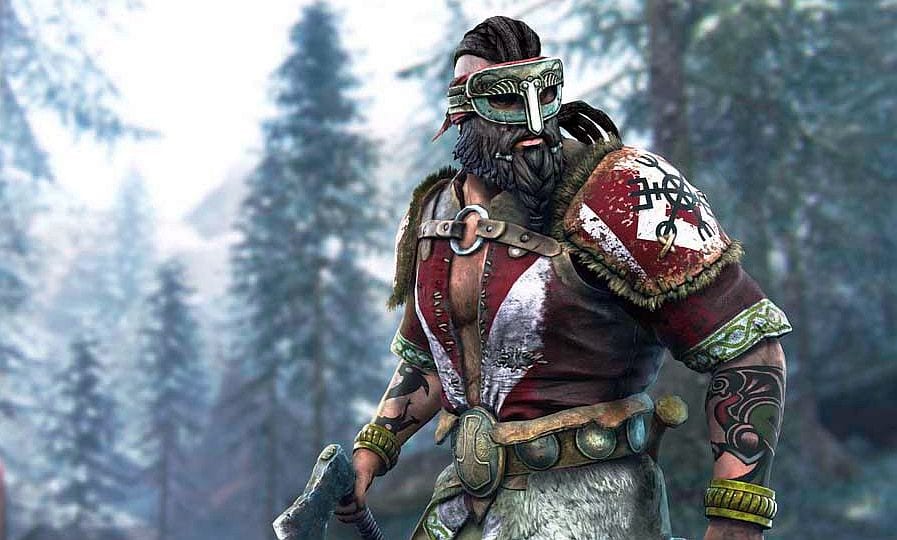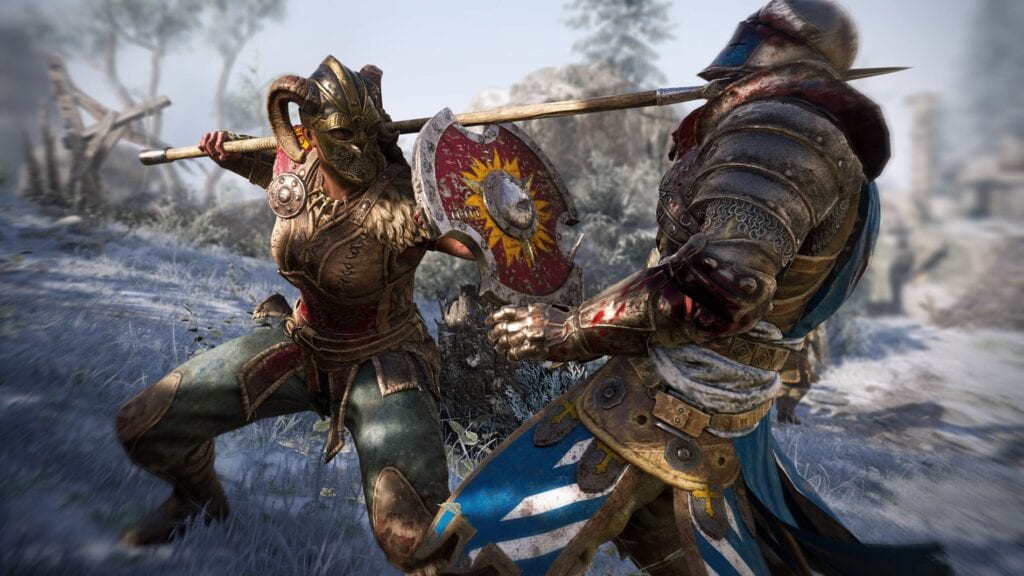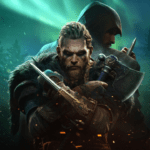For Honor: A Look at the Medieval History behind the Factions and Classes
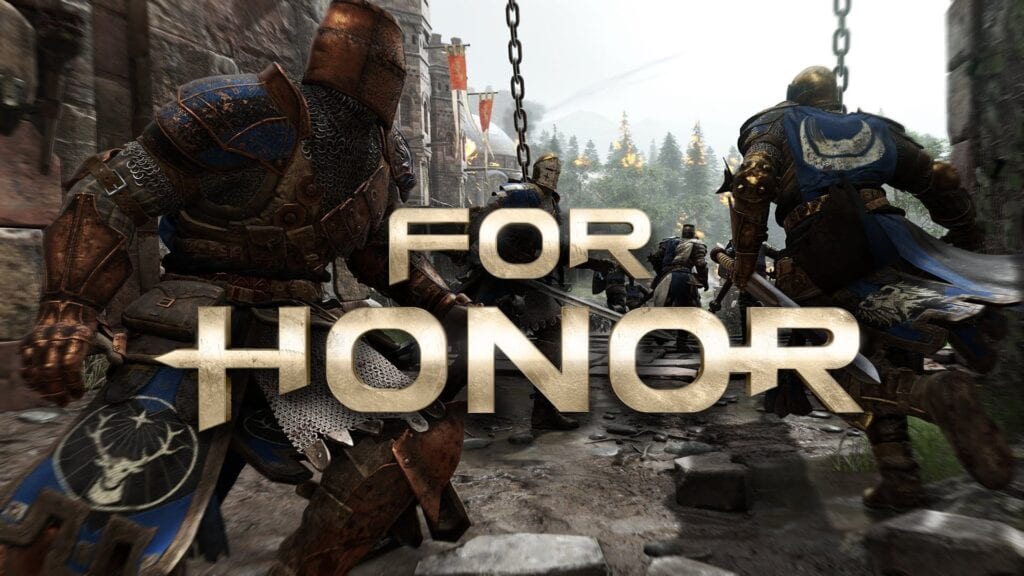
Since the dawn of time, mankind has found a reason for violence and with that, battle and warfare became the natural progression. Over the ages, conflict bred civilization and warfare became almost an art – these rules and codes that many civilizations spent centuries perfecting this art of war.
For Honor by Ubisoft is a game that captures the pure essence of the art of war as dictated by the civilizations and customs of the middle ages. Drawing from the warring cultures of Feudal Japan, Medieval Europe, and the Scandinavian warriors of the dark ages, Ubisoft created a very historically rich battleground for players to experience. To find the muse behind the classes and factions of For Honor, one has only to turn to history. First up the Samurai:
Beginning in Feudal Japan, the first example of ‘Eastern Chivalry’, stands the Bushi or Samurai warriors. Masters of military strategy and martial combat, Bushi warriors were generally made up of talented middle-class warriors sworn to the service of a Japanese Lord. Having their very honor hinge on their skill in battle made the Samurai a fearsome force to face. For the Samurai, the nodachi, or katana, was the primary weapon of choice providing this talented sword master a versatile and deadly tool to carve out a path to victory. The governing principle behind the Samurai warrior was the Bushido, a code of honor among the Bushi warriors that dictated a relentless pursuit of honor in battle and honor in death. The Kensei warriors of the Myre are “as close as one can get” to a living incarnation of the Bushido. Wielding a fearsome nodachi, the Kensei warrior will win victory for the emperor or die with honor on the field of battle.
To go along with their male counterparts the Nobushi warriors, or the onna-bugeisha, is a female warrior who follows the Bushido. Although separated from the main army in rank, the onna-bugeisha of ancient Japan proved no less lethal and would often fight alongside the Samurai in battle making up another part of the Ancient Japanese war machine. Wielding a bladed polearm called a naginata, the onna-bugeisha could strike with deadly accuracy while staying out of reach of most hostile attackers. The naginata, unlike a katana or nodachi, was designed specifically for the women warriors of Japan to compensate for the strength and body size advantage of male opponents. Aside from the naginata, ranged weaponry such as bows and arrows would be utilized in battle by onna-bugeishas to equalize any traditionally masculine advantages such as physical strength and body size.
Taking up the bottom rung of the Samurai class we have the Orochi. The Orochi are described in For Honor as “the Imperial assassins of the Samurai. They roam the battlefield like ghosts, terrorizing and slaughtering those unfortunate enough to cross their path.” As far as parallels to history what we are looking at here is the Shinobi warrior or, you guessed it, the Ninja. The utilities of the ninja warrior included espionage, sabotage, infiltration, assassination and guerrilla warfare. These methods of covert warfare were seen as dishonorable by the Bushido code and therefore, the Shinobi or Ninja warriors were seen as beneath the Samurai cast.
Though not respected like their more ‘chivalrous’ counterparts, the Ninja warrior were a very effective weapon to wield against enemy forces. The Orochi, much like the Ninja, utilizes anything from the classic katana to a poisoned blade to dispatch their foes. The only good enemy is a dead one.
The last class from For Honor’s Samurai faction is the mythical Shugoki. This is where history falls off and mythology takes over. The Shugoki does not have a direct historical counterpart but can be theoretically traced back to the Japanese mythical creatures such as the oni or the yokai. Oni are classified as demons, devils or trolls and are usually portrayed as gigantic ogre-like humanoid creatures with sharp claws, wild hair, and two long horns. Given the Shugoki’s description of being a protector, I would venture to say that they are more likely characterized after the mythological nigi-mitama than an oni. Yokai are ghosts, or phantoms, that range from malevolent to mischevious from which the nigi-mitama are benevolent beings, or the protective spirits of ancestors. Though modeled in appearance to resemble the caricature of an oni, in spirit they represent the nigi-mitama.
Moving along to the next Faction in our historical review, we have the paragons of western civilization: the brave and cunning Knights. The code of Chivalry was the dominating philosophy in western Europe during the middle ages, it guided men towards feats of glory, strength of character, and paths of honor. The code of Chivalry distinguished the noble heroes of tale, from common fighting men and savages.
The Wardens of For Honor being described as “powerful, noble warriors; proud, loyal, and brilliant diplomats, the Wardens are expect to embody the highest values of Knighthood,” are just that, Knights. During the middle ages, Warriors of noble birth gained status as a knight by proving their worth in battle and by swearing an oath of fealty to their King. Serving as commanders in a time of battle and diplomats in a time of peace, the Knights of Western Europe are the very backbone of medieval society. Wielding a two-handed double-edged blade, resembling a Bastard Sword or a Scottish Claymore, the Warden enters the field of battle carrying not just a very impressive and lethal weapon, but also the honor and bearings of loyal Knight.
While Knights formed the backbone of Medieval society and warfare, they were not in majority when it came to fighting forces. During the latter part of the Middle Ages with the demand for troops required by the Crusades, certain stipulations were made in order to increase Europe’s fighting forces. One such stipulation was the conscription of poor and condemned men to the service of the crusaders army. Equipped with a basic un-heralded shield and a footman’s flail, the Conqueror from For Honor is a reflection of the Medieval Crusader.
Being removed from conviction by law into conscription for redemption, the Crusaders’ main force was often filled with men seeking a respite from the burdens of the law and therefore made excellent “sword fodder” for massive scaled warfare. Though the Conquerors most likely did not fight in a ‘Holy War’, their status reflects greatly the image of the Crusader.
Although the Peacekeepers of For Honor most resemble the skills of an assassin, on a historical level they would most likely fill the role of a skirmisher. Quite possibly drawing from a mixture of a European skirmisher and an Eastern assassin, the Peacekeeper controls the battlefield through dexterous and silent lethality. Though the assassins of the ancient Middle East and Asia were known for their mastery of stealth, unequaled understanding of subterfuge, and incredibly lethal skill sets, they were rarely seen on a field of battle. Utilized primarily in non-confrontational conflicts, the assassin would not have been a normality on the battlefields of the middle ages. The Skirmisher, on the other hand, is a much more common class of soldier. Also utilizing a dexterous style, skirmishers would not usually be equipped with much in the way of defensive gear but rather would be focused more on offense. As skilled warriors at hand to hand combat, skirmishers would be deal the majority of killing blows, scanning the battlefields for targets to dispatch. Skirmishers were utilized both for the majority of hand to hand combat as well as the final sweep to make sure none of the enemy survive the battle encounter.
The final class for the Noble faction of Knights is somewhat of a specialized soldier, historically speaking. The Lawbringer, with his pole axe, is the harbinger of law in For Honor. This would draw one’s conclusion to compare them to the sheriffs or bailiffs of the medieval societal structure. Essentially a one man law enforcement unit, Sheriffs were charged with upholding the edicts of the land and maintaining order throughout the villages of medieval Europe. The weapons and armor of the Lawbringer however are unique from the rest of the Knights, quite possibly having their inspiration drawn from the elite forces of the medieval Swiss Halberdiers. With the innovative halberd, being an advanced take on the footman’s bill or bladed polearm, the legions of the Swiss Halberdiers were an advanced force that was something to behold. Combining advanced armoring with revolutionary weaponry, the Halberdier were equally equipped to deal with opposing foot soldiers and cavalry alike. With the utility of the halberd, or poleaxe, a Halberdier was able to keep enemy footmen at a distance where they themselves could strike, but were not likely themselves to be in range of an enemy strike. They could also use the halberd as a pike to halt a cavalry attack, or the hook blade on the back of the axe head to completely dismount the horsemen making the Halberdiers one of the most utilitarian troops on the field of battle.
The final faction to cover comes from the warrior clans of medieval Scandinavia, the Vikings. The Viking Raider represents the foundation of Viking society, a warrior people who value bravery and honor above all. The karls, or free folk, of Norse society were generally occupied as fishermen or farmers for most of the year, however every year the Jarls would call for raids upon the neighboring kingdoms to supplement the resources that the Norse homelands lacked. A Norseman may be a farmer for the longer part of the year, but he is a warrior first and a raider by heritage. Wielding a two-handed great axe the Norse, or Viking, Raider is at the forefront of battle. With terrifying ferocity and frightening lethality, the viking raiders are unleashed to carve swaths from the enemy’s forces delivering a glorious victory or receiving an honorable death.
With the karls making up the bulk of viking society, the Warlord, or Jarl, is who you will find at the top of Norse hierarchy. The Jarls were the nobles of Norse culture, ruling villages and dictating the laws with which to live by. The Jarls were living paragons of Viking philosophy, only the stongest and most honorable warriors were allowed to lead. If a Jarl faltered or strayed from their duties or honor, the Jarl would not long remained unchallenged. Although the Jarls of Norse society were usually more wealthy than the karls or common free folk, they were not usually born into ‘aristocracy’ like the nobles of neighboring kingdoms. A Jarl’s wealth and status was earned through blood and sweat, and was not merely wealth for the sake of wealth – but a symbol of his honor and bravery.
Among the ranks of karls in Norse society there were few who were occupied as full-time warriors with no other responsibilities. Those that were had generally earned the right to become a housekarl, essentially a career warrior or bodyguard. The Viking Berserker is very likely based on this particular sect of Norse warriors. As the most skilled and savage warriors of a Viking raiding party, berserkers strike fear into the heart of friend and foe alike – unleashing a relentless onslaught of attacks against their foes and not ceasing until the battle is won or until they lay slain on the field.
[The berserker tradition was] a physical and spiritual form of martial arts comparable to the Japanese Samurai code of Bushido. Its values included self-reliance, self-control, strict training, able to perform feats with weapons, and to be willing to die selflessly defending family and companions.
In battle, the berserkers were subject to fits of frenzy. They would howl like wild beasts, foamed at the mouth, and gnawed the iron rim of their shields. According to belief, during these fits they were immune to steel and fire, and made great havoc in the ranks of the enemy.
Lastly we have the fierce warriors of myth brought to life on the battlefield of For Honor, the Valkyries. As mythological warrior maidens of Norse lore, the Valkyries were responsible for deciding who lives and who dies on the field of battle. The Valkyries were the beings responsible for carrying a fallen warrior’s spirit to Valhalla if they were deemed worthy. In For Honor, the order of Valkyries fight to gain honor for their fallen brethren so as to hopefully earn passage to Valhalla for those who could not earn it themselves. In Norse legend, the Valkyries literally chose which warriors would fall and which would survive, wielding magical spears the Valkyries would roam the battlefield undetected and ensure death or allow survival before carrying away the souls of the fallen. The legend of the Valkyries is perhaps one of the longest standing aspects of Norse mythology, being recognized even in the modern era through literary and musical means, you’ve probably heard one such tribute though perhaps not known of it, the Flight of the Valkyries composed by Wagner in the late 1800’s.
What do you guys think of all that history, pretty cool right? Turns out history might not be all that boring after all! If you have anything to add we would love to hear your thoughts so hit us up in the comments. Make sure to stay tuned to Don’t Feed the Gamers for the latest in gaming news updates and all around nerdy fun!

Luciano Cancilla106 Posts
Luciano has an undeniable passion for all things BioWare and has an enthusiastic perspective on the Gaming Industry. With a love for gaming, comics, and Geek Culture, you can always expect to have a good time nerding out.
